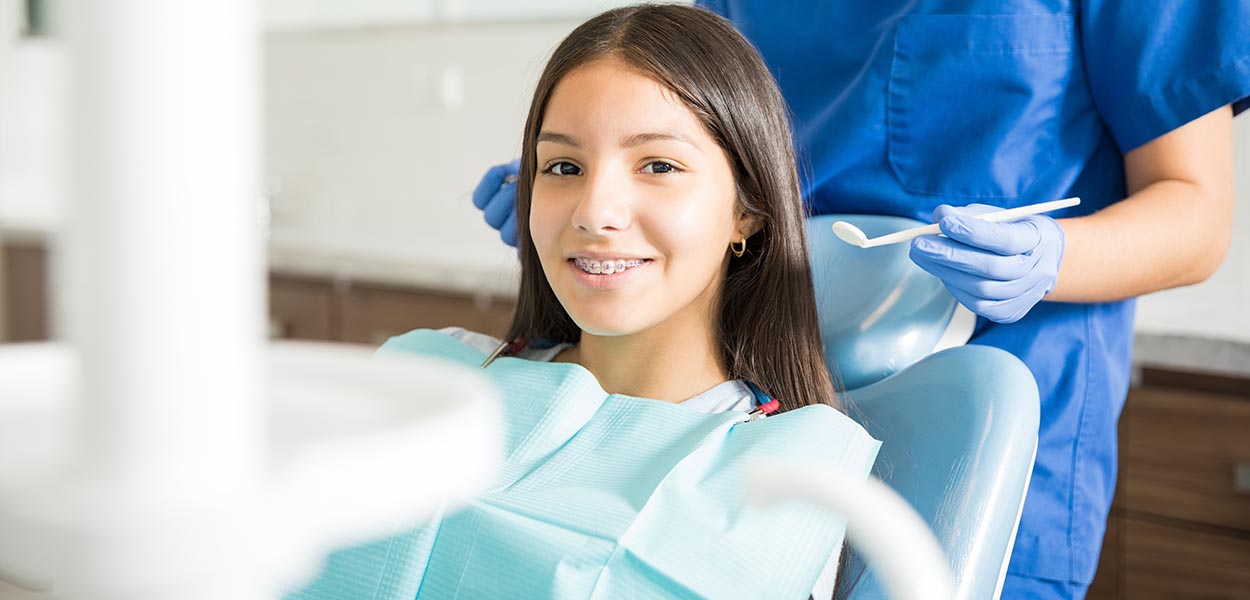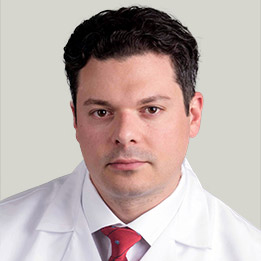Everything You Need to Know About Braces as a Teen

Kenilworth, IL – If you are a teen who needs braces, you probably have some questions. How will wearing braces impact your life? Dr. Michael Stosich, a Chicago-area orthodontist, treats patients of all ages and answers some of the most commonly asked questions by teens.
-
- How long will I have to wear braces? This is probably the most common question teens ask when they are told they need braces. And they rarely like the answer because there is no exact length of time that can be given. The amount of time you’ll be in braces depends on several factors:
- The first is what kind of malocclusion needs to be corrected, and how severe it is. Some issues are a bit more involved to correct, and therefore will take a bit longer.
- If you had treatment at a younger age, called early interceptive treatment, it may make your treatment now more efficient. The first phase of treatment should have helped to guide the growth of the jaw to make the best environment to then straighten the smile and fine-tune the bite.
- How your body responds to treatment is also a factor. Some people have mouths that respond quickly to the movement, while others take a bit more time. This is not something that can be predicted ahead of time.
- One of the most important factors in how long treatment will take is you. You play an important role in your treatment, and how well you care for your teeth and follow the directions of your orthodontist will play a big role in whether your treatment stays on track or not. If you have been prescribed elastics or headgear, it is important to wear them exactly as your orthodontist recommended. Likewise, if you chose clear aligners or Invisalign, it is important to comply with the recommended length of wear.
- How long will I have to wear braces? This is probably the most common question teens ask when they are told they need braces. And they rarely like the answer because there is no exact length of time that can be given. The amount of time you’ll be in braces depends on several factors:
Luckily for patients who choose Dr. Stosich and Stosich Consulting, they can receive the most effective and efficient treatment found anywhere. Thanks to his precise planning and scientifically backed treatment methods, Dr. Stosioch’s patients breeze through treatment.
- What braces option is right for me? The answer to this question is often as unique as the patient asking it. Dr. Stosich is committed to providing his patients with the latest and best scientifically backed treatment methods in the orthodontic world. Treatment options range from standard metal braces to more aesthetically pleasing options, such as clear braces and iD Clear Aligners. Dr. Stosich offers low profile, personalized iD braces that are more comfortable than ever. They are efficient, and because they are low-profile, they don’t make patients feel like they are flashing a mouth full of metal all the time.But, Dr. Stosich knows that the teen years can be hard enough as it is, so he offers other more discrete orthodontic treatment options. Clear ceramic braces offer the efficiency of metal braces, but with more subtle materials to blend in better. Lingual braces are metal brackets and wires that are fitted along the tongue side of the teeth. They are one of the most advanced options Dr. Stosich offers, and are ideal for patients who desire the most discrete of treatment options. Dr. Stosich’s iDentity Clear Aligners offer an efficient and precise way to straighten the teeth. His custom aligners require fewer aligners than Invisalign treatment, and are more precise and efficient. Dr. Stosich was specially trained in Invisalign during his residency and is a highly experienced Invisalign provider.
- Do I really have to change what I eat and skip some of my favorite foods for the whole time I’m in braces? The answer to this is it depends on the braces option you choose. If you opted for standard metal braces, clear braces, or lingual braces, you will need to make some adjustments to your diet. You’ll need to avoid anything too hard, sticky, chewy or crunchy as these could damage the brackets and wires of your braces. However, if you opt for iD Clear Aligners or Invisalign, you won’t have to adjust your diet at all. The aligner trays are removable, and should be removed every time you eat or drink anything other than plain water.
- What do I need to know about taking care of my braces? For metal and clear braces, it is important to take care to avoid eating anything that could damage the brackets and wires. If you experience a loose wire or broken bracket, it is important to get it fixed as soon as possible to ensure it doesn’t impact your treatment.If you opted for Invisalign or iD Clear Aligners, there are some things you need to remember. First, always remove the aligners when eating. Chewing with the aligner in can damage the plastic of the aligner, which could negatively affect the fit. It is also important to keep the aligners away from heat, as too much heat can warp the plastic and alter how the aligner fits over the teeth.You will wear each set of aligners for approximately two weeks before switching to the next set, so it is important to take care of the aligners. Brush or soak them to remove food build-up and to keep them fresh and clean.
- Do I really have to wear elastics? My friends told me they are annoying and painful. Not everyone will require elastics, but for those that do, it is important that they are worn as your orthodontist recommends. Your braces work hard to guide the teeth to their ideal locations, but for some patients, elastics are required to help improve the fit of the bite. This is a very important part of your orthodontic treatment. Without wearing your elastics, you may end up with a straight looking smile, but if the bite doesn’t also fit properly, your orthodontic treatment won’t be complete. Orthodontic treatment doesn’t just make straight smiles, but healthy functioning bites, as well. While the elastics can take some time to get used to, the more you wear them, the easier it will get. Changes are good that if your friends complained about the elastic hurting, they weren’t wearing them as often as they should have.
- Everyone says Invisalign is a great option because it is basically invisible, and if I choose it, I won’t need elastics, right? The aligners are made of a clear plastic, so it is true that they will fit into your smile easily. However, it is not true that if you choose Invisalign, you won’t need elastics. When Invisalign was first introduced, it was only used for more minor malocclusions. But, in recent years the use of buttons, attachments and elastics has opened the treatment up to more patients. However, it is important to note that if you are choosing Invisalign because it is less noticeable, these buttons and attachments will increase its visibility in your mouth.
- Do I really have to get braces? I don’t mind my smile. You may not be bothered by your crooked, crowded or misaligned smile now, but chances are it will catch up to you. Orthodontic treatment isn’t only about looks – it’s about creating a healthier mouth, as well. If your smile is particularly crowded, it is harder to clean in between the teeth. This can lead to decay and periodontal disease. If your bite isn’t properly aligned, that means there is uneven pressure being placed each time you bite down. This can lead to teeth that can become chipped, cracked and broken. You can also experience pain and soreness from a bad bite. A straighter smile and properly functioning bite can also improve speech, and how you bite and chew.
- Will braces hurt? Unfortunately, there is no orthodontic solution that is without a bit of discomfort. Moving your teeth and guiding your jaw causes some pain along the way. However, the pain should never be severe and should subside in a matter of days. The first day you get your braces on will be the day you notice the most discomfort as your mouth adjusts to the appliance in the mouth. It is best to stick with soft foods during the first day or two, but in no time, your mouth will be adjusted. You’ll also notice that your mouth may feel a bit sore after your adjustments with the orthodontist. You can take an over-the-counter pain reliever to help with any discomfort. For patients with metal or clear braces, there is an adjustment period as your mouth gets used to the brackets and wires. If there are any areas that irritate your mouth, you can use orthodontic wax to help.
For patients who opt for Invisalign, they may feel a bit of discomfort every time a new aligner set is used. This should only last for the first day or two. The aligners are meant to feel tight as they guide your teeth to their new locations. While your aligners are made of smooth plastic, there may occasionally be an aligner that has an area that feels rough in the mouth. Let your orthodontist know so he or she can correct this for you.
Dr. Stosich warns patients to be wary of claims of technologies that can make treatment more comfortable and efficient. These vibrating tools often come with grand claims, but without the scientific evidence to back them up. Unfortunately, because of the nature of what orthodontic treatment is accomplishing, there will be some discomfort along the way.
Orthodontic treatment can provide tremendous benefits for patients. A straighter smile and properly functioning bite can lead to better oral health and improved self-esteem. But, braces are a commitment and require dedication and work not just on the part of the orthodontist, but on the patient as well.
Dr. Stosich is committed to providing the most personalized, highly skilled treatment found, and he and his staff work hard to make the journey enjoyable along the way. The team will offer open communication throughout your orthodontic journey, and will work hard to be the best teammates possible.
If you are interested in learning more about the difference a smile can make on your life, call Dr. Stosich today at 847-548-4200.


